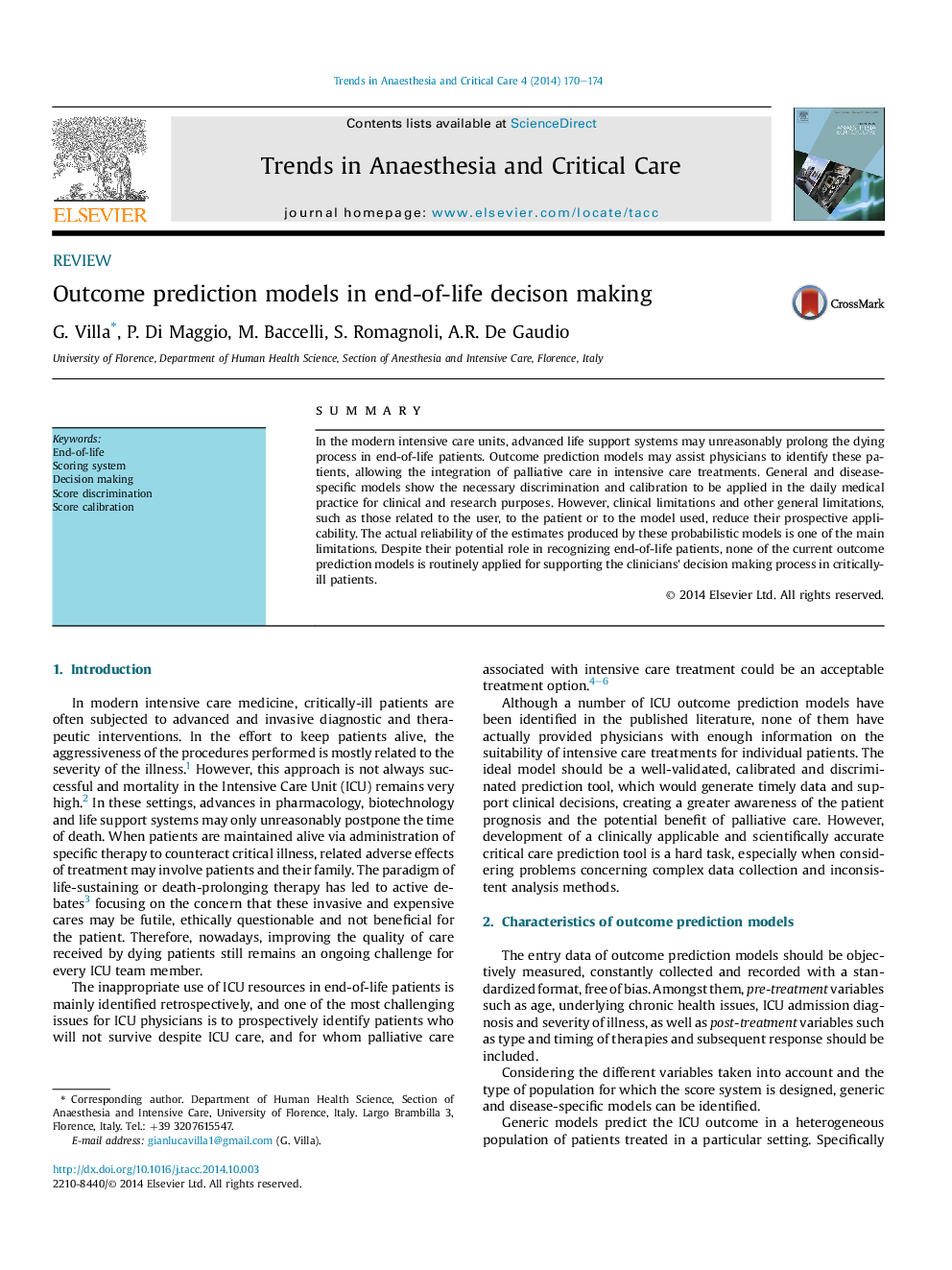| Article ID | Journal | Published Year | Pages | File Type |
|---|---|---|---|---|
| 5887934 | Trends in Anaesthesia and Critical Care | 2014 | 5 Pages |
Abstract
In the modern intensive care units, advanced life support systems may unreasonably prolong the dying process in end-of-life patients. Outcome prediction models may assist physicians to identify these patients, allowing the integration of palliative care in intensive care treatments. General and disease-specific models show the necessary discrimination and calibration to be applied in the daily medical practice for clinical and research purposes. However, clinical limitations and other general limitations, such as those related to the user, to the patient or to the model used, reduce their prospective applicability. The actual reliability of the estimates produced by these probabilistic models is one of the main limitations. Despite their potential role in recognizing end-of-life patients, none of the current outcome prediction models is routinely applied for supporting the clinicians' decision making process in critically-ill patients.
Related Topics
Health Sciences
Medicine and Dentistry
Anesthesiology and Pain Medicine
Authors
G. Villa, P. Di Maggio, M. Baccelli, S. Romagnoli, A.R. De Gaudio,
